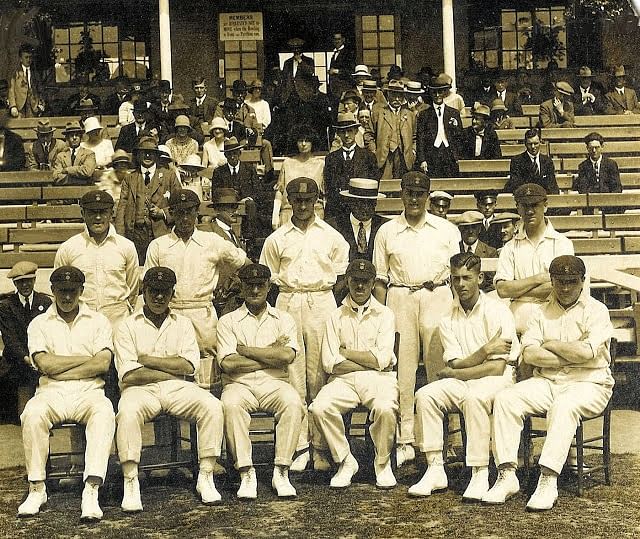
The A-Z of Derbyshire Cricket - L is for Lee: Garnet Lee

Without fear of contradiction, I think I could say that Derbyshire haven’t had an L of a lot of good players beginning with that letter. They could have though…
For those with memories stretching back as far as mine, you will recall the summer when Eddie Barlow brought over three young South Africans to gain experience with our Second XI. One was the man who featured in my previous article, Peter Kirsten. The others were Allan Lamb and Garth Le Roux.
As we all know, Lamb went on to become an England legend, yet typically of the Derbyshire administration of the time, no one thought to check his credentials when he appeared for our Seconds. What might have been accomplished by a Derbyshire batting line up of Wright, Kirsten and Lamb at 2, 3, 4? Le Roux was strong and fast, eventually sealing his reputation in World Series Cricket as well as on the south coast for Sussex. Either of those players would have been a certainty for top spot in this category, but I think we were all happy with the choice of Peter Kirsten…
We shouldn’t forget the example set by Charl Langeveldt, but he only had one full summer in our colours so I discount him accordingly. There’s also Charlie Lee, a batsman who came to Derbyshire from Yorkshire and ended up with 12,000 runs at an average of 27. He had eight centuries in that tally but his self-deprecating sense of humour suggested that his style was not always to the fans liking. In one of the old club year books he wrote that one newspaper suggested it would be nice if he batted against the clock, rather than the sundial! He could hit though and on one occasion clumped Jim McConnon of Glamorgan for five sixes on a turning pitch, winning a game in the final innings that the off-spinner must have fancied was his for the taking.
My choice for L supremo, however, is Garnet Lee, pictured above, second left on the front row in a photograph taken in front of the Ilkeston pavilion in 1925, his debut season. Astonishingly, the all-rounder didn’t play for Derbyshire until he was 38, moving across the border from Nottinghamshire, where he struggled to keep a regular place in the side over seventeen seasons. He then played for eight seasons and was a key man in an ever-improving side. In those years he scored sixteen centuries and just short of ten thousand runs. They were attractively made too, in a side not always known for batting solidity. At Northampton in 1931 he hit eight sixes in an unbeaten 141 and there were plenty of knocks that suited the demands of the game.
In addition, he had a career tally of 397 wickets with leg breaks and googlies at a very respectable average of 28, with 313 of those coming in Derbyshire colours. Eighteen times he took five wickets in an innings and his greatest performance came in 1927 against Northamptonshire. Lee won the match single-handed, scoring an unbeaten century, followed by bowling figures of 7-78 and 5-65.
Even in his final season, at the age of 46, he was good enough to score a thousand runs and take sixteen wickets, yet he realised that there was a lot of emerging talent at the club, much of it nurtured by Lee in his work with young players. The Pope brothers, Les Townsend and Stan Worthington were all-rounders of ability and Lee knew the time was right to step aside. He became a first-class umpire, staying on the list until 1949, while during the war he coached at Repton School, playing a major part in the development of future club captain, Donald Carr.
Garnet Lee gave Derbyshire an experienced player of quality, at a time when their young players had only potential. He gave them breathing space to develop and made a substantial contribution to the club’s history.